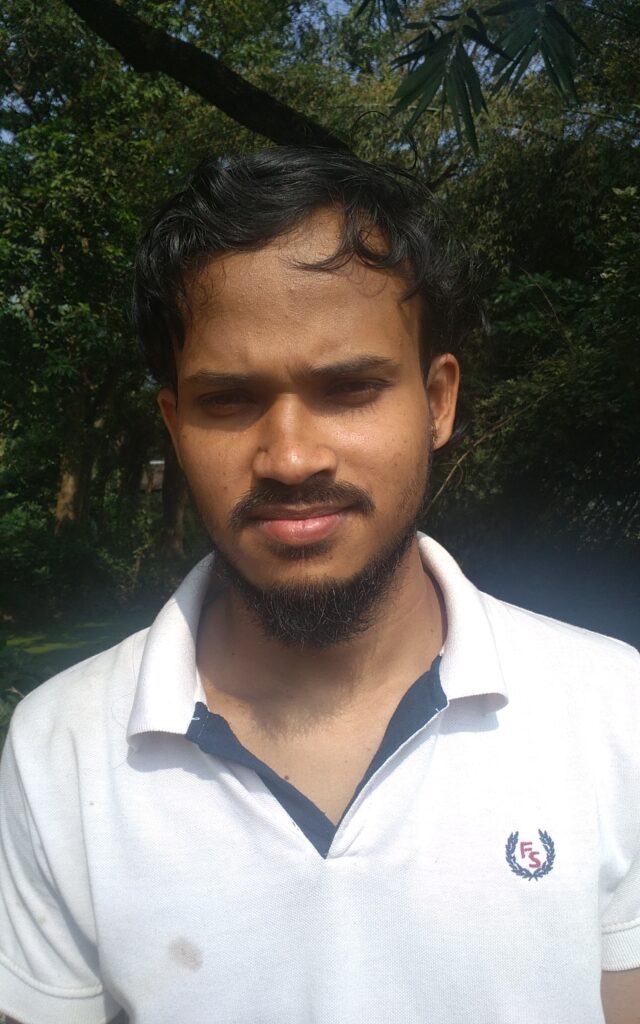Mainstreaming The Tribals- Lessons Learned And Future Directions
Written By Manoj Das, Banyan Impact Fellow, 2021-22
As I have always been accused of romanticizing the indigenous people, I should begin this blog with a disclaimer that I might get a little biased towards them. However, I am not the only one to be blamed for this biasness. People, mostly environmentalists, anthropologists, and human rights defenders, who know indigenous people and have worked closely with these wonderful people also tend to be accused of romanticizing them.
Another prominent figure in this list is our first prime minister Pandit Jawaharlal Nehru, who during the formation of Panchsheel-a set of five guidelines for the development of indigenous people, stressed the rich cultural heritage and ancient wisdom of the tribals and called upon the civil servants to work for the development of the tribals without over-administrating them.
But, have we kept our promise and allowed the tribal people to develop on their own terms by respecting their world views or have we simply imposed our own narrative of development on them in the name of mainstreaming them? As India celebrates “Azadi ka Amrit Mahotsav” to commemorate her 75th year of independence, this is a question we need to ask ourselves to evaluate where we stand in indigenous rights and tribal welfare.
As mainstreaming has been used as a tool to develop the tribals, let’s first analyze the effects of mainstreaming on the indigenous people. Mainstreaming as the name suggests, is a process of pushing a group of people to join the country’s dominant society. There can be arguments both in favor and against mainstreaming. But here in this blog, let’s try understanding it through the example of the tribes of Andaman, who for long have been subjected to Mainstreaming by the authorities.
The islands of Andaman are primarily inhabited by four tribes, namely the Great Andamanese, Sentinelese, Jarawa, and Onge. The first-ever colonization of the Andaman took place in the year of 1789 when the British Indian Navy found a harbor in the South Andaman region, but soon they had to abandon the island after the outbreak of cerebral malaria. The Britishers again started a penal settlement in South Andaman in 1858 to accommodate the mutineers sentenced to life imprisonment after the Indian Mutiny of 1857. This was the beginning of the end of many tribes of the Andaman archipelago, who later on became the victims of colonization during the British era and imposed development in independent India.
The Great Andamanese
Great Andamanese playing musical instruments made of wood. One of the four primary tribes of Andaman, the great Andamanese are known for their musical skill. Source: Tour My India.
The Great Andamanese tribe was the first one to fall prey to the colonization. At first, the Andamanese were killed due to their tussle with the Indian sepoys. But, then they were befriended in exchange for coconut, bananas, tobacco, and opium and were deployed to locate runaway convicts. To appease them further, the British Government constructed Andamenese homes for the friendly Great Andamanese, which turned into a graveyard for the tribals, as none of the over 150 infants born in the homes survived beyond two years due to their lack of immunity to the outside diseases which were brought by the settlers.
Pneumonia in 1868, measles epidemic in 1877, and then syphilis wiped out perhaps half the total population of the Great Andamanese, in less than 40 years of their contact with the outsiders. The situation became so worse that there were only 23 surviving Great Andamanese in 1979 and they had to wait for 15 long years to have a marriage among them for repopulating their tribe.
The Onge
A group of young Onge children. Source: survivalinternational.com
The Onge also suffered a similar fate as the Great Andamanese. The census of 1966 had clearly warned about the mass extinction of the Onge tribe. In 1975, the then Prime Minister of India addressed the people of the Andamans and Nicobars and assured them that, neither resettlement nor development should be made an excuse to uproot tribal groups, or cut down forests. She emphasized that the tribals are the original inhabitants and any disturbance may threaten their survival. In the same year, a multidisciplinary team was constituted to study the impact of deforestation on the island.
The team stated that forest areas inhabited by the aboriginals should not be cleared anymore else it will have catastrophic effects on the tribals. Yet, just 2 years after that, in 1977, two-thirds of the 700 sq km of Onge land on Little Andaman was allotted to settlers and the Forest Development Corporation (FDC). Like the Great Andamanese, these developments resulted in a massive decline of the Onge population. From 672 in 1901 they have reduced to just 118 in 2020.
The Jarawa
A man taking pictures of the Onge people during a ” Human Safari” in the Jarawa Tribal Area. Source: vice.com
The 3rd tribe, Jarawa is going through a phase that great Andamanese and Onge have already been through. Like other tribes of the islands, Jarawas have been leading a happy and self-sufficient life on their ancestral land, until the year 1990, when the local authorities felt a need of mainstreaming them. They came up with the so-called master plan to settle the Jarawa in two villages with an economy based on fishery, suggesting that hunting and gathering could be their sports.
The plan was so detailed that the authority even decided the style of clothes that they would want Jarawas to wear. But, like in the cases of Andamanese and Onges, this master plan proved to be disastrous for the Jarawas and most of them died due to a series of outbreaks of measles which was the result of coming in contact with the outsiders.
Though the plan was stopped after vigorous campaigns by some organizations and tribal rights activists, the Andaman trunk road which cuts through the territory of the Jarawas, has paved the way for Human Safaris in the region. Even though the Supreme Court had ordered as early as 2002 for the closure of the road, it is still open, in fact, now the Government has removed the Restricted Area Permit from 29 islands of Andaman and Nicobar including those of the Jarawas, for fostering tourism. These developments have led to a number of human rights violations of the Jarawa people at the hands of outsiders.
The Sentinelese
The efforts to integrate Sentinelese with mainland India started during the British period. Maurice Vidal Portman, the British officer in charge of the Andamanese landed on north sentinel island in 1880 and brought an old man, his wife, and four children to Port Blair in the interest of science. The couple died in captivity and the children were returned with gifts to their island. Post that, a number of attempts were made by the authority to befriend them in exchange for pigs, coconuts, dolls, and irons. But, the Sentinelese have vigorously rejected all such contact missions and sometimes have responded to such contact expeditions with hostile gestures.
A group of Sentinelese firing arrows at the outsiders who had come to contact them. Source: Outlook India
Finally, in 1996, the Government dropped the gift-dropping mission as it did not see any merit in mainstreaming a group of people who were healthy, content, and who had thrived on their own for up to 55,000 years. Though some missionaries, poachers, and adventurists still manage to go to their lands, the Sentinelese are relatively secluded compared to other tribes of the island. The Government has beefed up security for the Sentinelese island and has declared entry into the exclusion zone of 5 k.m around the island a punishable offense.
Conclusion
The experience of mainstreaming the tribes of the Andaman islands taught us very important lessons to us. The meaning of development can be different for different people. Hence, it is really necessary to understand people’s worldviews and their ideas about development, otherwise, we can end up doing more harm than good, like in the cases of the Great Andamanese, the Onge, and the Jarawas of Andaman and Nicobar Islands. Our imposed development did not only kill their lives but also their lifestyles, cultures, languages, and their very identities.
In fact, the only tribe, which is better off there, is the tribe that was allowed to develop on its own. But, there are less vulnerable tribes like Kattunayakan, Bhutia, Khadia, Oraon, Pardhi, Bhil, Kamar, etc. who, for various reasons have come forward to make some changes in their lives. Our authorities should recall the lessons that the tribes of Andaman have taught and take mindful decisions while integrating them with the rest of India, only then we can prevent the history from repeating itself.
References
Zai, Author. “The Andaman Tribes – Victims of Development.” Home, 1 June 1986, https://www.culturalsurvival.org/publications/cultural-survival-quarterly/andaman-tribes-victims-development.
An Interview with a Member of a Human Safari Tribe. 18 Feb. 2013, https://www.vice.com/en/article/bnykw5/everyone-needs-to-stop-exploiting-the-jarawa-tribe.
https://magazines.odisha.gov.in/Orissareview/2017/November/engpdf/100-110.pdf. Accessed 4 June 2022.
Andaman & Nicobar Tourism. https://www.andamantourism.gov.in/Foreigners.php. Accessed 4 June 2022.
Image References
Das, Swairik. “The Indigenous Colour of India – The Indian Tribes.” Tour My India, 15 May 2014, https://www.tourmyindia.com/blog/the-indigenous-colour-of-india-the-indian-tribes/.
International, Survival. “Onge.” Survival International, https://www.survivalinternational.org/tribes/onge. Accessed 4 June 2022.
An Interview with a Member of a Human Safari Tribe. 18 Feb. 2013, https://www.vice.com/en/article/bnykw5/everyone-needs-to-stop-exploiting-the-jarawa-tribe.
Bureau, Outlook. “Who Are The Sentinelese, The Tribe Who Allegedly Killed US National In Andamans?” Https://Www.Outlookindia.Com/, 13 Feb. 2022, https://www.outlookindia.com/website/story/who-are-the-sentinelese-the-tribe-who-allegedly-killed-us-national-in-andamans/320597.
Sengupta, Sudipto. “Madhumala Chattopadhyay, the Woman Who Made the Sentinelese Put Their Arrows Down.” ThePrint, 29 Nov. 2018, https://theprint.in/opinion/madhumala-chattopadhyay-the-woman-who-made-the-sentinelese-put-their-arrows-down/156330/.
About the Author

Manoj was born in a farmer’s family in one of the remotest villages of Odisha. For knowing, how decisions are made, policies are implemented and how the country is governed, Manoj pursued his Master in Good Governance and Public Policy from Sri Sri University and then went on to do Gandhi Fellowship in Bageshwar, Uttarakhand to complement his theoretical concepts with practical knowledge by working with Government officials, students, and communities.
After his fellowship, he worked as an Aspirational District Collaborative Coordinator under the NITI Aayog and played a pivotal role in launching and implementing “Surakshit Hum and Surakshit Tum” program of the NITI Aayog- Piramal Foundation in the Gajapati District of Odisha. In all his past roles and engagements, Manoj has always strived to balance the so-called opposite goals of growth and preservation.
Mainstreaming The Tribals- Lessons Learned And Future Directions
Previous Posts
Significance of Due Diligence in Mergers & Acquisition Transaction
Soon Before under section- 304B of the Indian Penal Code





